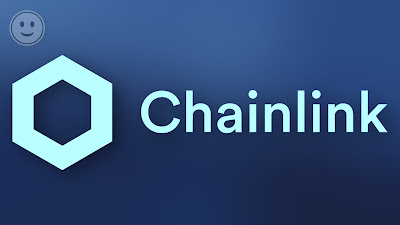What is Chainlink (LINK)?
The Oracle network that is broadcasted all over the different computer networks requires some real-world data. ChainLink (Link) is a type of Ethereum token that aims to provide incentives in the form of data to the chain of computers linked to the global network.
This ChainLink exchange on a global network is responsible for fulfilling the needs of small contracts by connecting them to real-world information. Hence, helping them to securely provide operations such as online transactions, API nourishment, and connection to external data sources.
About ChainLink (Link) cryptocurrency.
Sergey Nazarov and Steve Ellis together founded the ChainLink network in June 2017. It was developed by SmartContract, which was a for-profit company. And, in September 2017, Ari Juels was included in the team as a company advisor.
They sold 35% of their units, which then amounted to 1 billion. This allowed them to raise a sum of $32 million based on ICO.
Who created Chainlink?
The Chainlink network was launched in June 2017 by the for-profit company SmartContract, and the first version was launched the same month.
Company co-founders, Steve Ellis and Sergey Nazarov, later published Chainlink’s white paper in September 2017 with Ari Juels, an advisor to the company.
The Chainlink team next held an initial coin offering (ICO), raising the equivalent of $32 million by selling 35% of the 1 billion unit supply of its LINK cryptocurrency.
As for the remainder of the tokens, 30% were distributed to SmartContract to be used for the development of the Chainlink blockchain and 35% went to incentivize node operators.
Primary features of Chainlink.
When the whitepaper was published in September 2017, the ChainLink exchange system aimed at providing better incentives in the form of data to different global networks. Therefore, let us look at some of the features of the ChainLink (Link) Cryptocurrency.
- Safe and non-alterable chain of network : It provides a better chain of a secure and safe network of information flowing through a different smart contract. They distribute real-time data and connect other APIs.
- Continuous and smoother connection for API : They provide a flexible arrangement of API that makes it easy to collect former reference data by integrating with all the different kinds of blockchain.
- Efficient solution : The ChainLink Crypto code provides efficient solutions that are hardwired with integrated blockchains and enhance security.
- Clear computation : They monitor every different aspect of the open-source code and the visualization of networks and their quality.
How does Chainlink work?
To facilitate communication between its users and external data sources, Chainlink divides its execution process into three distinct steps.
- Oracle Selection : First, Chainlink users draft a service-level agreement (SLA) that specifies a set of desired data requirements. The software then uses the SLA to match the user with oracles that can provide the data. Once the parameters are set, the user submits the SLA and deposits their LINK cryptocurrency in an Order-Matching contract, which accepts bids from oracles.
- Data Reporting : This is where the oracles connect with external sources and obtain the real-world data requested in the SLA. The data is then processed by the oracles and sent back to contracts running on the Chainlink blockchain.
- Result Aggregation : The last step involves tallying the results of the data oracles collect and returning it to an Aggregation contract. The Aggregation contract takes the responses, assesses the validity of each and returns a weighted score, using the sum of all the data received, to the user.
Architecture
The Chainlink blockchain is powered by three types of smart contracts.
- Aggregating Contracts : Collect data from oracles and match the most accurate results with the smart contract that needs them.
- Order-Matching Contract : Matches a smart contract’s service level agreement (SLA) with the best bidding oracles.
- Reputation Contract : Verifies an oracle’s integrity by checking its track record. This includes factors such as the total number of completed requests, average response time and amount of LINK cryptocurrency the oracle has staked.
However, Chainlink also interacts with oracles that do not operate on its blockchain, and that are independently responsible for collecting the real world data requested by the contracts.
The nodes are made up of two components:
- Chainlink Core : Chainlink Core is responsible for reading newly filed SLAs and routing assignments to the Chainlink Adapter.
- Chainlink Adapter : Acts as the bridge between the node and the external data. The adapter can read and process the data and write it to the blockchain.
Tags:
Cryptocurrency
